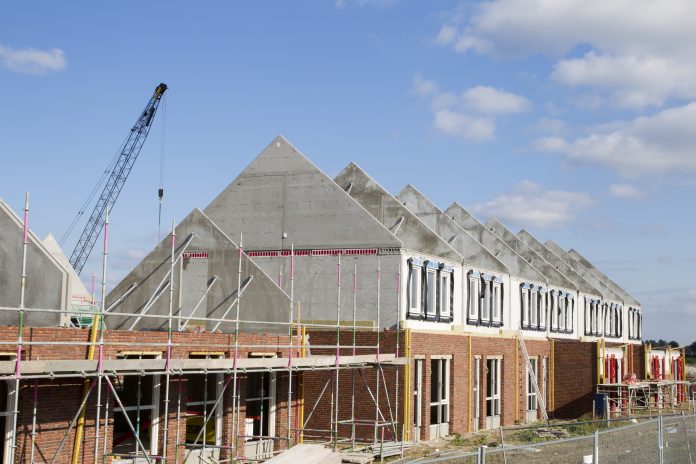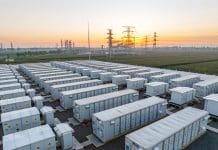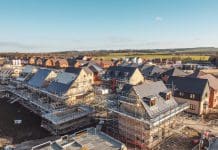Joseph Raftery, heating product manager at Samsung Climate Solutions UK, shares insight into the ‘must-knows’ for developers about heat pumps in new builds – from design to installation
There has been much discussion about heat pumps over the last few months. Increasingly, we are seeing more and more examples of successful, large new build developments adopting this technology with great results, particularly in areas such as energy efficiency. So, what do developers really need to know about heat pumps in new builds and why should they choose them?
There is a golden rule when it comes to installing heat pumps in new builds. It is essential to incorporate them into the design process from the outset. Heat pumps work best and most efficiently when included in a design from the beginning as part of the conceptual and functional utilization of the new home.
So, what exactly should be considered from the outset?
Step 1: choosing the correct size unit
When specifying heat pumps for a development, the first step is to choose the correct unit size based on the hot water usage and heat loss of the property. In order to design the most appropriate size of air source heat pump and domestic hot water system, first you need to assess the water storage volume (typically 200 litres) and the preferred recovery time (the time it will take to heat up the 200 litres of stored water from 35 to 60 degrees Celsius). The heat loss of the property will also affect the selection of the unit that is needed, so reducing this through increased insulation is key. Other energy-saving options, including upgrading to triple-glazed windows, will lead to the most efficient use of heat pump technology. The less power input needed, the more efficient the system, regardless of the heat source. Reducing the heat load on any build in combination with an air source heat pump will set developers on the pathway to help achieve the government’s net zero carbon targets.
Step 2: choosing the correct heat emitters
Once the heat pump system has been designed, the right choice of heat emitters (radiators or underfloor heating) is critical. There is a misconception that the lower flow temperature of a heat pump (35 to 55 degrees Celsius) limits the comfort for the end user. However, in reality, while most gas boilers heat water at a slightly higher temperature than heat pumps, all this means is that the heat emitters need to have a larger surface area to emit the same heat at a lower flow temperature. This is one of the reasons why underfloor heating is particularly effective with heat pumps. Finding smart ways of increasing the surface area of radiators without increasing the wall space they take up, such as opting for a double or triple panel over single panel, can also work extremely well with heat pumps. Additionally, every new home since 2014, according to the Part L domestic building compliance regulation, should already have their heating system designed to a maximum mean water temperature of 55 degrees Celsius or lower. If these homes were delivered correctly, all new homes are already heat pump ready. BEIS has taken the step to future-proof all replacement heating systems by introducing regulations that all systems will be designed to a maximum flow temperature of 55 degrees Celsius by 2026.
It is also worth noting that heat pumps work much more efficiently than other commonly used domestic heat sources. They are on average 400% energy efficient (compared to only 92% from a properly serviced gas boiler) due to the fact that for every Kw of electricity inputted, you could expect to get around 4Kw thermal output in a correctly designed system.
Heat pumps should be always set to operate at the lowest possible mean water temperature using weather compensation. This means they should not be turned on and off all the time, the common way we are used to operating our gas boilers, as this causes spikes in the heating operation. Heat pumps are at their most efficient and their quietest when kept at the ‘setback temperature’, in other words, a few degrees lower than your desired room temperature when the room is not habited. Then the temperature only needs to be increased by a few degrees according to your comfort levels when needed.
Manufacturers are engaging homeowners on how heat pumps should be best operated in order to maximise energy efficiency and environmental benefits. Help and advice are now readily available.
Step 3: incorporating spatial design
Spatial design considerations are vital when it comes to installing a heat pump, particularly in new builds. A certain area for airflow around the outdoor unit is needed in order for the heat pump to work most effectively, as well as space for servicing. There are also imaginative ways that a heat pump could be incorporated into garden space so as to avoid affecting the aesthetic impact of the build. For example, specific areas could be created on one side of the building where a heat pump could fit with the appropriate air flow yet not be visible from the garden. With careful planning, heat pumps can also sit discreetly at the back of the garden. Innovations in the aesthetics of heat pump outdoor units with consumers in mind, as well as the increased uptake in heat pumps more generally, mean it will soon become a mainstream feature in our homes.
Step 4: tips for easy installation and installer training options
The final stage in the successful delivery of an air source heat pump is its installation in the new home. It has to be highlighted that air source heat pumps are actually very easy to install and use when done so correctly. Pre-plumbed cylinders alongside the heat pump outdoor unit facilitate easy installation, particularly in heat pump-ready new builds. For practitioners looking to upskill in the industry, manufacturers such as Samsung are increasing their provisions for both product-specific training as well as OFQUAL Level 3 Qualifications in Low carbon-Low temperature and Heat Pump Core and Air to Water courses. In order to meet government targets and demand for low-carbon heating, support must be made available for both installers and developers to ensure the demand can be met. Initiatives such as the Heat Pump Association opening its membership to installers in June at the Installer Live Exhibition are all vital steps to prepare this industry for the inevitable growth to come.
The most important takeaway for developers is that heat pumps are a technology that is proven effective, backed by an established industry with the ability to support mass take up when accompanied by appropriate government backing. The heat pump market in the UK has grown by 64% from 2020 to 2021 and the increasing interest in heat pumps is a significant step not only towards the electrification of heating but also towards an attitudinal shift in how we view our domestic heating in this country. We are committed and eager to support developers in delivering the critical transition to low-carbon heating in the UK.
(1) Taken from BSRIA research














